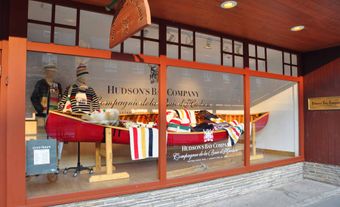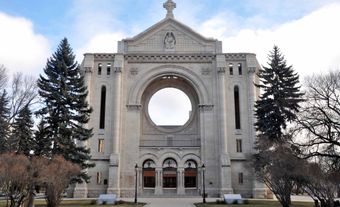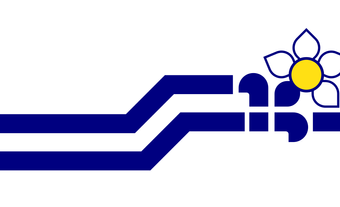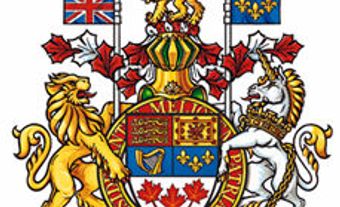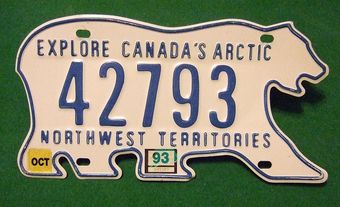The Franco-Ténois are francophones living in the Northwest Territories (NWT), where they represent a minority (4 per cent in Yellowknife and 3 per cent in Hay River) consisting mainly of expatriates: 58 per cent were born in Quebec and 90 per cent outside the NWT. Members of the immigrant population are bilingual, and the children attend school while the adults work mostly in public administration, education, health care and social services.
History
Voyageur Laurent Leroux (1759-1855) was the first Canadian of European descent to go to Great Slave Lake. He established the Fort Resolution trading post for Gregory, MacLeod and Company in 1786 and the Fort Providence trading post for the North West Company in 1789 (after the two companies had merged). Others followed his example in this region mostly inhabited by the Dene people and the Métis, a people of Canadian and Aboriginal descent.
Trappers and merchants travelled to the Northwest Territories during the 18th century to profit from the fur trade while Oblates and Grey Nuns went there to propagate the Catholic faith. However, the latter did not stay to establish French Catholic communities like they did in Ontario and the Prairies (seeFranco-Ontarians, Francophones of Manitoba, French in the West).
When the Canadian Confederation took over Rupert's Land in 1870, half of its population spoke French (see alsoCanada West, Dominion of Canada). Section 110 of the Northwest Territories Act, which defined the NWT administrative machinery, recognized French and English as official languages in courts and in the legislative assembly. In 1884, this Administration allowed for separate schools (Catholic).
With the settlement of Anglo-Protestants in the NWT, the weight and symbolic capital of the French and Métis populations decreased. Following Louis Riel’s second rebellion, the rising intolerance compelled the NWT authorities to declare English the only language admissible in schools and in the legislative assembly in 1892. However, some amendments were made in 1896 and 1901 to allow French to be used in situations where primary school students did not understand English. By 1969, when the federal State entrusted to the territorial government the responsibility for education, no French language class existed in the NWT.
20th century
The oil and mining industries expanded in the 1950s (see also Petroleum Exploration and Production) and the Official Languages Act was enacted in 1969, highlighting a number of language obligations imposed on federal services. As a result, the French Canadian population increased in Yellowknife, capital city of the NWT. Founded in 1978, the Association culturelle franco-ténoise (ACFT) organized cultural events and created a sense of belonging within the Franco-Ténois community. The ACFT forged relationships with other cultural organisations, namely in Frobisher Bay (Iqaluit, 1981), Fort Smith (1984), Hay River (1988) and Inuvik (2000). This pan territorial network first strived to obtain antennae to be able to receive radio waves from the Radio-Canada station. It then advocated for the expansion of French language government services and, more importantly, for access to French language education for the children. In 1977, school administrators allowed classes to be taught in French for the first years of primary school, and some classes opened in Yellowknife.
In 1982, the Liberal government in Ottawa attempted to impose official bilingualism in this federal territory. However, local elected representatives of the NWT refused. On the other hand, the latter enacted their own Official Languages Act in 1984 to recognize English and French, as well as nine Aboriginal languages spoken on the territory: Chipewyan, Cree, Gwich’in, Inuinnaqtun, Inuktitut, Inuvialuktun, North Slavey, South Slavey and Tlicho (seeIndigenous Languages in Canada).
The territorial government was resistant to the idea of expanding French language education unless the additional costs were absorbed by the federal State. Yet, as per Section 23 of the Canadian Charter of Rights and Freedoms, the 119 right holder children, as numbered the 1986 federal census, represented a sufficient portion of the population to warrant the existence of French language classes as well as one or two French language schools. In 1988, the ACFT, by then renamed the Fédération franco-ténoise (FFT), started a lawsuit against the territorial government — in 1989, the first French language education program was created in Yellowknife.
Culture and Identity
To rally the population, the FFT founded the weekly L’Aquilon in 1986. In 1989, the Éditions franco-ténoises released Leroux, Beaulieu et les autres ou La petite histoire des francophones dans les Territoires du Nord-Ouest. This book used stories from the past to highlight the constant francophone presence which merged with the path of French-Canadian history. According to historian Julie Lavigne, this identity-building project kept alive the memory of French speakers. Although the latter might often have been simple visitors, they made a mark in the development of the NWT. The book also gave meaning to the contemporary presence of francophones who, for the most part, were immigrants from Quebec, Acadia and Alberta. Thus, those who knew historical landmarks would be able to build a collective identity and aspire to a common destiny, which in this case was linked to the political claims of the FFT. The Fédération also followed the example of other provincial francophone communities and created the Franco-Ténois flag in 1992. The blue sky represents the community’s Frenchness; the snowy and curved land symbolizes its belonging in the polar region; the polar bear stands for freedom and open spaces; and the fleur-de-lys and snowflake halves illustrate the francophone community and its Nordic roots ( see alsoFranco-Ontarian Flag, Acadian Flag).

However, the claims and collective imagination both remained projects. Language shifts to English rose to 55 per cent in 1986. This anglicization highlighted the inequality between the languages and the lack of services offered in French. The FFT fought against the marginalization of the French culture and the development of French language education was the main issue it tackled.
As a result of the lawsuit started by the FFT against the territorial government, by September 1989 the latter was obliged to create a French language education program in Yellowknife, where 70 per cent of Franco-Ténois resided. However, the ruling of the Supreme Court of Canada in the Mahé case (1990) and the Reference re Public Schools Act in Manitoba (1993) were also necessary for Section 23 to be added in the Canadian Charter of Rights and Freedoms. This decision represented a milestone in the development of francophone communities, for it confirmed their rights to establish and manage their own schools.
Did you know?
The Fête de la francophonie nordique is held every June and celebrates the Franco-Ténois culture.
Educational institutions
The NWT had no choice but to act. The government created the Conseil scolaire francophone in 1997, but for three years this francophone school board remained under the authority of Yellowknige Education District No. 1. In 2000, the Conseil became the Commission scolaire francophone (CSF). In September 1999, the CSF inaugurated its first school in a separate building and named it l’École Allain-St-Cyr in honour of a local activist.
In September 1998, parents in Hay River were able to open a French class and the number of grades rose until they became sufficient to warrant a new institution, which opened in September 2005. In 2017-2018, almost 200 students attended either of these two schools.
Population
The francophone population represents a minority (4 per cent in Yellowknife and 3 per cent in Hay River) and consists mainly of expatriates: 58 per cent from Quebec and 90 per cent from outside the NWT. Members of the immigrant population are bilingual and the children attend school while the adults work mostly in public administration, education, health care and social services.
Today, the Franco-Ténois community counts on institutions such as the Garderie Plein-Soleil daycare centre, the Radio Taïga radio station and a committee for economic growth. In the NWT, 3 per cent of the population have French as their mother tongue. Although its demographic weight has remained the same in absolute number, the community has grown from 1,606 to 1,287 strong from 2001 to 2016. Francophones interact with the members of the population who have Aboriginal languages (13 per cent) and English (78 per cent) as their mother tongue.
A little over 1 per cent of the population speaks French at home, but 11 per cent of the students (many whom are from Aboriginal descent) are enrolled in a French immersion program. According to the 2016 census, 10 per cent of the NWT population can speak English and French.

 Share on Facebook
Share on Facebook Share on X
Share on X Share by Email
Share by Email Share on Google Classroom
Share on Google Classroom
